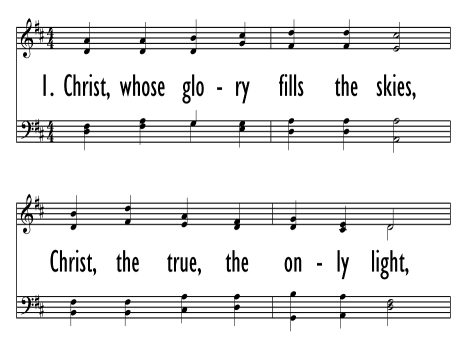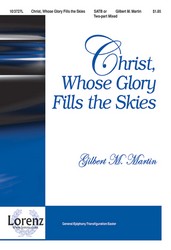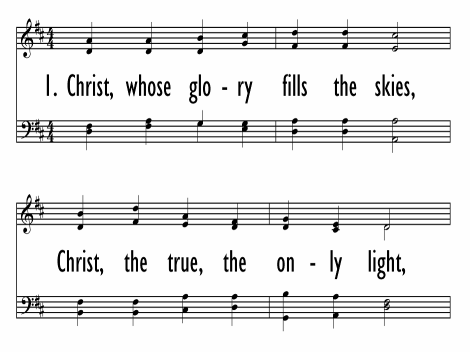- |
User Links
Christ, Whose Glory Fills the Skies
Hymn Information
- First Line
- Christ, whose glory fills the skies
- Author
- Charles Wesley (1740)
- Tune Name
- LUX PRIMA
- Composer
- Charles F. Gounod, 1818-1893 (1872)
- Topic
- Church Year: Transfiguration · Jesus Christ: Day Star · Jesus Christ: Light · New Heaven and Earth · Praise of Christ · Elements of Worship: Confession · Elements of Worship: Forgiviness and Grace
Copyright Information
- Text Copyright
- Public Domain
- Tune Copyright
- Public Domain
- Reprint/Projection Information
- Words and Music: The Words and Music are in the Public Domain; you do not need permission to project or reprint the Words and Music.
Full Text
Scripture References
Further Reflections on Scripture References
Titled "Morning Hymn" by Wesley, it is unusual in that it does not contain the customary reference to the previous night's rest or to the work and dangers of the day ahead. The text begins by placing the focus entirely on Christ, the "light of the world," the sun of Righteousness who rises with healing in his wings"; he is the "Dayspring" and "Daystar." Thus the "light of Christ" is to fill our lives and lead us forward "to the perfect day."
Bert Polman, Psalter Hymnal Handbook
Confessions and Statements of Faith References
Further Reflections on Confessions and Statements of Faith References
The Catechism says that those who know Christ’s forgiveness are “to thank God for such deliverance” (Heidelberg Catechism, Lord’s Day 1, Question and Answer 2). As a result, “With our whole lives we may show that we are thankful to God for his benefits, so that he may be praised through us, and that we may be assured of our faith by its fruits, and so that by our godly living our neighbors may be won over to Christ” (Heidelberg Catechism, Lord’s Day 32, Question and Answer 86).
Christ, Whose Glory Fills the Skies
Assurance
Additional Prayers
Christ, Whose Glory Fills the Skies
Tune Information
- Name
- LUX PRIMA
- Key
- F Major
- Meter
- 7.7.7.7.7.7


 My Starred Hymns
My Starred Hymns






